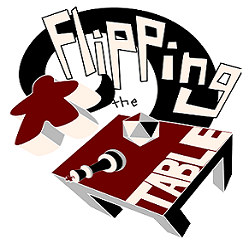Chess, Shogi, Go, Stratego, all games that predate the 20th century, and have established their place in the world as strong, deep games with long lasting replayability. However, what would require a new game like these to come into this world, one that makes people stop and think, "This game is a lot more complex than I first thought"? We will find out the answer to this question together in Tak: A Beautiful Game.

GAME DESCRIPTION: Tak is a 2 player board game published by Cheapass Games, originally concieved by Pat Rothfuss in "The Wise Man's Fear", and created by James Earnest. Players take turns creating roads and walls using simple pieces.
SET-UP: First, determine the size of the board used, from 3x3 to 6x6, and 8x8. Take the appropriate number of pieces, or Stones. Capstones are used only in boards 5x5 or larger. Finally, choose a player to start at random. That player takes 1 of their opponents pieces and places it. The 2nd player does the same to the 1st player.
STONES: The object of the game is to create a road from one side of the board to the other. Players take turns doing one of two actions: Place or Move. A player may place any Stone on any empty location on the board. If the Stone is flat, it is part of a road. If it is standing, it is a Wall. Walls cannot be stacked on, do not count as part of a road, but may move.
MOVE: Instead of placing, a player may instead move any Stone or stack of Stones 1 row horizontally or vertically onto a flat stone or an empty space, and continue moving down that row as long as the player leaves at least one stone along each space. There is no limit to how tall the stack may be, but a player may only move a stack if their colored stone is on top, and only up to a number of pieces equal to the size of the board (in a 3x3 game, a player may move 3 stones maximum).

CAPSTONES: In larger games, Capstones may also be used. Capstones may be placed onto any empty space, just like ordinary stones. They may count as part of the road, and may not be stacked on. A Capstone may move onto a Wall, and turn that Wall into a Road. However, the Capstone must move alone to convert a Wall into a Road.
WINNING: There are two ways to end a game. The first is if either player creates an unbroken path using no diagonals from any end of the board to the other, that player wins. The second ending is if either players run out of pieces, in which case the last player who played ends their turn, and the other player wins.
CONCLUSION: As many might be aware, Tak was adapted from a novel,
The Wise Man's Fear, as an equivalent to older games like Chess and Go. It is my opinion that this game surpasses that expectation. It feels like a game that would be re-discovered in modern times. But as a game, it is simple in theory, deeply complex in practice. Every move has you thinking about varying possibilities. Honestly, I would love to see technology advance to a point where computers can play this exceptionally well. If you love games like Chess, but maybe found it a bit hard to remember all the pieces movements, or you just want a change, I recommend this game heartily.
AFTERTHOUGHTS: 2 Afterthoughts this week. First, I was introduced to this game by my neighbor, and it would go amiss if I did not properly cite him. Thank you Steve Johnson. And if you are ever passing through Cedar City, Utah, feel free to check out his new store Noggin Games. 2nd, thank you to @robespierrette for a pointing out a couple rules I got wrong or failed to notice.








